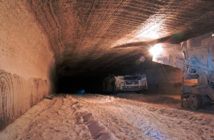FINANCIAL TIMES
By Claire Wrathall

In a letter to his friend Cyril Connolly, George Orwell fretted about the extent to which Morocco had been “utterly debauched by the tourist racket”. That was as long ago as 1938, so you might assume that Marrakech, the country’s number one destination had long since reached its saturation point for tourist development.
Far from it. The city is the focus of an unprecedented luxury hotel building boom that will see no fewer than six five-star hotels open this year, with many more to come. Whether there will be sufficient guests to fill them, however, remains to be seen.
More
IN AFRICAN DESTINATIONS
“How they can possibly hope to fill all those new beds in this market is a complete mystery,” says Jonathan Wix, owner of Riad Farnatchi, one of 400 or so riad hotels in the Medina. “We’ve had three very difficult years, though we’re weathering it a lot better than some places. We haven’t lost money and we don’t need a return on a capital investment, we simply have to make a trading profit.” Even so, he has been offering discounts of 40 per cent off its Dh3,800/£300-a-night rates.
With so many new hotels, it is perhaps not surprising they are bidding to outdo each other with the lavishness of their design and amenities. At the Palais Namaskar, a third of the 12-acre grounds are under water, thanks to the 28 swimming pools (27 of them private), the ponds and the great reflective sheet of cooling water that bisects the property.

There’s no denying that all this water makes the hotel, 20 minutes by car from the Medina in the date grove-turned-suburb known as the Palmeraie, a heavenly place to be, offering everything you’d expect from the newest hotel in the Oetker Collection, owner of the peerless Hôtel du Cap Eden-Roc in Antibes and Le Bristol in Paris. Though it only opened in April, its gardens are already lush, scented with jasmine and lit at dusk with candles in lanterns and log fires.
But though the carving on the miles of colonnaded walkways recalls the scalloped arches of the Koutoubia mosque, there’s little that is typically Moroccan about it. Order a tagine, and it’s served under a silver cloche. And I couldn’t help feeling that a hotel this reliant on water had no place in the desert.
It’s not the only new hotel that is less than firmly rooted in its location. From the rooftop bar at Namaskar, you can see the monumental 161-room Taj Palace, run by Tata-owned, Mumbai-headquartered, Taj Hotels and due to open in November.
In terms of style, it’s a melting pot of Mughal, Moroccan and miscellaneous Asian influences, conceived by American painter-turned-architect, Stuart Church. Indeed, its general manager Yves Wencker calls it “a little piece of India”, geographically closer to Europe than the fabled Taj palaces of Mumbai and Jodhpur which inspire it, but with Indian chefs in its restaurant and Indian ayurvedic doctors in its spa.
“I think our USP will be our Indian provenance and that will make us attractive to Indian clientele, especially honeymooners,” he says.
A 10-minute drive towards the city brings you to the Mosaic Palais Aziza, yet another hotel primed to open this summer, this time the property of the Saudi Prince Bandar, whose own immense palace stands opposite. It has just 28 mostly attractive (bar the crude cod-Orientalist paintings), and quintessentially Moroccan, rooms. With its zillijtiles, polished tadelakt plasterwork, and the brightly painted wood they call zouac, it has the air of a boutique but the ambitions (and rates) of somewhere much grander.

There’s intense activity south of the Medina too. May saw the opening of the Selman, just beyond the airport, which has the most opulent, most technologically advanced spa in the city, an 80m swimming pool, a water garden redolent of the Generalife in Granada, as well as a stable of Arabian thoroughbreds.
The hotel, its interiors and its palatial stables are the work of Jacques Garcia, who masterminded the three-year renovation of La Mamounia, prior to its 2009 reinvention, and is a connoisseur of traditional Moroccan crafts and heritage. The tiles, marquetry, stained glass, lacy metalwork and infinitely delicate moucharabieh fretwork are beautiful. Garcia is also the designer behind the forthcoming Delano, the first Moroccan outpost of the New York-based Morgans Group (operator of the Delano on Miami’s South Beach), which opens in September in the Hivernage business district. Morgans has also announced that next year it will open a Mondrian (like the hotels of that name in Miami, Los Angeles and New York) south of the centre near the Agdal Gardens.
Also on the horizon are an edition of Mauritius’s fabled Royal Palm; the Jawhar, by the Menara Gardens, owned by Monaco’s Société des Bains de Mer; an 80-room resort from Italy’s Baglioni Hotels; a Park Hyatt; and, in 2014, a 54-room Mandarin Oriental.
But beyond the planning departments of these great hotel brands, optimism is harder to find. The next “two or three years will be challenging”, says Didier Picquot, La Mamounia’s general manager, over a drink in the hotel’s elegant Bar Italien. He says he hopes the developers of all the new hotels are well resourced financially because the market cannot possibly absorb so many new rooms.
Even his fabled hotel has not been full. In 1952, Paul Bowles described it as “just a little harder to get into than heaven”, but despite its reputation and heritage, its fabulously exotic gardens and near-perfect location, it operated at an average occupancy rate of 57 per cent last year.
Overall, the city saw a 10 per cent fall in visitor numbers in the first quarter of 2012 – usually the peak winter season – compared with 2011, which itself saw a fall of nine per cent, attributable believes Lahcen Haddad, the country’s tourism minister, to the Arab spring, the bombing of the Argana Café, which killed 17 in April 2011, and the economic downturn.
Traditionally, the French have made up half of visitors to the kingdom but the eurozone crisis has hit tourist numbers. Consequently, many of the new hotels are setting their sights on markets beyond the European Union. Arrivals from Arab countries rose 14 per cent in 2011. Four per cent of guests at La Mamounia came from Brazil. And the Selman has hired a personable Russian, Yulia Veresova, to manage guest relations.
Certainly at Riad Farnatchi, where I spent three idyllic days recently, there was a cosmopolitan mix of guests staying in its nine rooms, from Saudi Arabia, the US, Germany and Japan. Of course, the riad experience doesn’t compare with a stay at one of the new influx of luxury resorts. There’s no formal French or Italian restaurant guided by a star chef, as there is at the Royal Mansour (Yannick Alléno), La Mamounia (Jean-Pierre Vigato), the Delano (Michel Rostang), the Selman (Fabrice Lasnon), the Mosaic Palais (Daniele Turco, formerly of Venice’s Gritti Palace) et al. Rather a Berber cook will prepare whatever you like if you put in a request in the morning. (The aromatic tagine of chicken, green olives and preserved lemons and date ice cream she prepared for us could not have been lovelier.)
Instead of a whole range of therapists at the spa, there’s just one accomplished masseur and a hammam. But the exquisite 17th-century carved stucco here is original, not repro. I loved Palais Namaskar because it is polished and glamorous, and staying there is an utter indulgence. But I loved Farnatchi more because it has what so many of the new hotels lack – a sense of authentic Morocco.
……………………………………………………………..
Details






